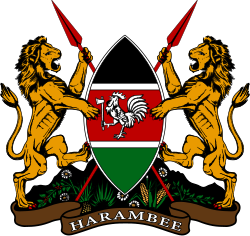History
Before the new constitution of Kenya that came into force on 27 August 2010, Kenya was divided into eight provinces (see map). The provinces, excluding Nairobi Province, were subdivided into 46 districts as at 1992, which were further subdivided into 262 divisions. The divisions were subdivided into 2,427 locations and 6,612 sublocations. [2] A province was administered by a Provincial Commissioner. This division of these provinces was a result of the devolution that came into effect after the promulgation of the 2010 Constitution. [3]
A third discrete type of classification are electoral constituencies. They are electoral areas without administrative functions, and are further subdivided into wards.
This page is based on this
Wikipedia article Text is available under the
CC BY-SA 4.0 license; additional terms may apply.
Images, videos and audio are available under their respective licenses.

